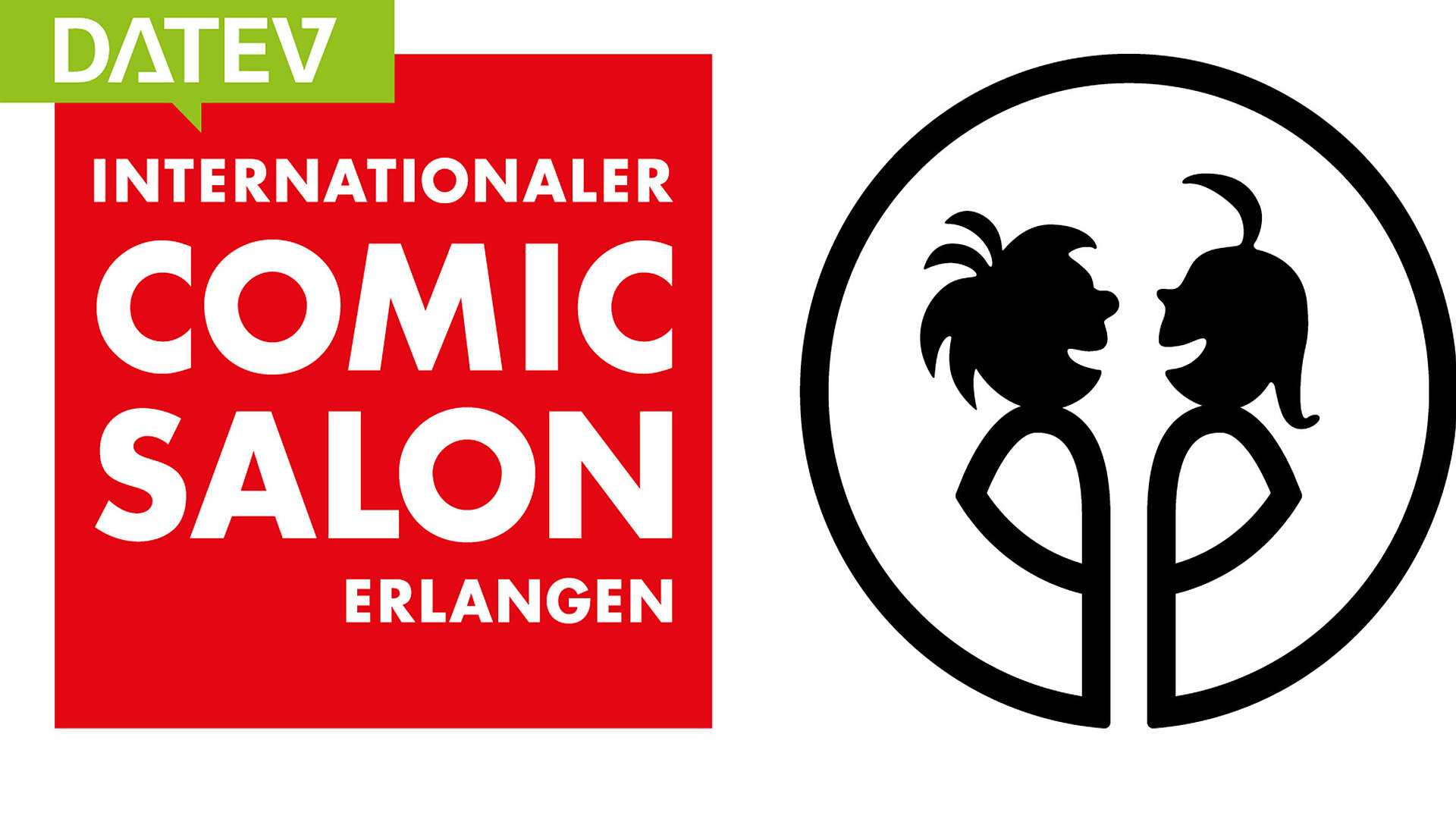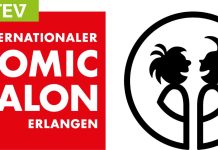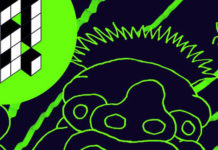
Since 1984, the Comic-Salon has awarded the Max und Moritz-Preis in a variety of categories, honoring works published in German. This year, due to the global pandemic, the show was cancelled and placed a few weeks later completely online, archived on their YouTube channel. Die Pressemitteilung können Sie hier in deutscher Sprache lesen. Of note (via Google Translate):
Traveling exhibition “The best German comics”
For the fourth time, In 2020 the German-speaking Max and Moritz winners will go on tour for two years, in a specially designed traveling exhibition entitled “The best German Comics” .Five stations are planned, starting on October 9th 2020 with the opening in the Erika-Fuchs-Haus in Schwarzenbach an der Saale. Curator and initiator of the The exhibition is again Darjush Davar, partners are the Erika-Fuchs-Haus, the Cöln Comic Haus and the Cultural office of the city of Erlangen.
The winners were announced a few weeks ago, online!
Here are the winners!
Best German-Speaking Comic-Artist
Laudation by Andrea Heinze:
Anna Haifisch had her international break-through with her comic strip “The Artist”, which she developed in 2015 and 2016 for the American “Vice” magazine, and of which the collected episodes have been published by Reprodukt. “The Artist” is an unsuccessful artist, whom Anna Haifisch portrays as a lanky, naked bird, humiliated by egocentric colleagues obediently familiar with the machinery of the market. “The Artist” comprises all aspects of the artistic life, including assorted cliches.
It’s a great read, because Anna Haifisch is wonderfully irreverent, writing from the inside of the art scene. And because she creates odd, scrapped pictures for her short stories, it also becomes an exercise in mindfulness for the poor, mistreated artist whose soul is plagued with self-doubt.
The art world knows Anna Haifisch from her hometown Leipzig, where she studied at the Hochschule für Grafik und Buchkunst, and from New York where she worked as a silkscreener during her studies. After obtaining her Master’s degree from Thomas M. Müller, she along with friends founded The Millionaire’s Club, an international comic and illustration festival that coincides with the book fair and takes place at established locations such as the Gallery of Contemporary Art or at left-leaning meetings places like Conne Island. Anna Haifisch and her Millionaire’s Club have had significant influence on Leipzig’s comic arts scene.
Anna Haifisch has stayed radically true to herself with her comics and illustrations. Scrawny, upright animal characters who are especially plagued by human weaknesses have become her trademark, as have her flat color surfaces – often yellow, orange, pink and radiant green. Her style is thus immediately recognizable, whether she’s drawing a vain parakeet admiring himself in the mirror for “Die Zeit”, or her collection of short stories “Schnappi”, published in 2019 by Rotopol, or when she turns her attention to the G7 Summit, for example, by inviting carnivorous and vegetarian animals to a classy gathering at peace conference, where disaster is bound to ensue.
In her latest web comic for the renowned Museum of Modern Art in New York, Anna Haifisch sends her mistreated naked artist bird to the MoMA to smuggle some of his own work onto the walls of an exhibition, because at a party he once told a collector couple, with a touch of cockiness, that one of his works hung there. Anna Haifisch, on the other hand, is in her mid thirties and doesn’t need to brag. There aren’t many comic artists who are as internationally recognized and work for so many renowned institutions. Anna Haifisch is a comic artist and an artist – and the best German comic artist of 2020.
Comics at MOMA?! Vice? And you can read her work in English!
Best German-language Comic
Der Umfall by Mikaël Ross
Fate strikes, of all times, on his birthday. Noel can’t even tell you which birthday. But luckily he can ask “Mumsi”. His mother knows everything and has everything under control. And he loves her more than anyone else. That evening she had promised they would be together forever. But now, instead of in bed, she’s lying on the floor, and there’s blood. His mother’s stroke changes Noel’s life from one moment to the next. His safe world has disappeared. His new home will be the care facility for handicapped persons in Neuerkerode. For the first time, Noel lives in a community. Whom can he trust here? Will people like him? “Der Umfall” emerged for the 150th anniversary of the Protestant Foundation of Neuerkerode. Berlin-based illustrator Mikaël Ross spent time there while working on the project in order to present an authentic story. The result is a wonderfully light and life-affirming book, funny and deeply touching in spite of tragedy.
English edition to be published in March 2021 by Fantagraphics.
Best International Comic in German
Am liebsten mag ich Monster by Emil Ferris
In the basement apartment of a building in Chicago in the 1960s, Karen lives with her cancer-stricken mother and her big brother – and a family secret. Her world is full of broken bodies and broken souls. The landlord is sick with jealousy of his wife. The lovely Jewish neighbor who was abused in Germany and survived a concentration camp. The best friend, a neglected little girl with an insatiable hunger. The guardian angel next door with strange scars on his face. And right outside the door? The mob. Karen’s most fervent wish is to be bitten by a monster, so that she may become one herself. Because silver bullets, stakes and fire beat monsters, but monsters always beat cancer! Then she would bite mother and brother, they would stay together and show death who’s the boss. Drawn with colored ballpoint pens on notebook paper, this family saga seems to arise almost incidentally, proving that you don’t need a Red Sable brush from Winsor & Newton to create great comic art.
If you haven’t yet read My Favorite Thing Is Monsters, here’s one more reason!
Best German-language Comic Strip
Busengewunder. Meine feministischen Kolumnen by Lisa Frühbeis
“Why don’t you do something about menstruation!” came the suggestion of an editor of the Berliner Tagesspiegel, for which Lisa Frühbeis drew a monthly column titled, “My 100 Days of Strange life” from 2017 to 2019. Her feminist comic strips, which appeared originally as webcomics, now are united in a book titled “Busengewunder”. It’s informative, smart, carefree and funny as well as on point in its social criticism. Lisa Frühbeis knows how to address societal taboos and shine a light on topics that aren’t often discussed in public. Like, why should a woman wear a bra? Or shave her legs? Wear high heels? Lisa Frühbeis asks many questions and provides clear answers, too. She clears up common (patriarchal) misconceptions about gender roles, beauty ideals, sexual clichés and calls for equality while drawing, literally, an alternative image of women.
Nothing yet in English, two books in German.
Best Comic for Children
Manno! Alles genau so in echt passiert by Anke Kuhl
“Manno! Alles genau so in echt passiert” is Anke Kuhl’s charming account of her childhood. The true to life retelling becomes evident when “Frau Kuhl” is called into the treatment room. In 18 episodes she recounts funny as well as sad moments in the life of a girl and her sister. There was the fight over the favorite pair of underwear, complete with toilet brushes and ick factor, the fear of dogs, the catastrophes of her father’s infidelity and her mother’s near-death experience after a bad accident. The characters are lovingly drawn, but not prettified. Their facial expressions are impressively relevant and accurate. Even Blacky and Stupsi the bunnies’ feelings are immediately recognizable. And the innocent interpretation of ABBA lyrics, “Gimmi Gimmi Gimmi ä Mänafa Mitleid” entertains parents too.
WOW! One nice thing about foreign comics awards is the delight of discovery! Anke Kuhl is a lauded illustrator of children’s books in Germany, and this is her first comics work. No English editions, yet.
Best German-language Comic Debut
Wie gut, dass wir darüber geredet haben by Julia Bernhard
The title is blatantly ironic, because although there is plenty of talking going on here, much of it even quite personal, no one seems to really be listening. In various scenes, Julia Bernhard’s protagonist gets together with people who should actually take an interest in her; the grandmother, a girlfriend, a lover, but in fact there are few signs of any such interest. Instead she is spoken at with empty words and platitudes to such an extent that reading becomes uncomfortable. “Wie gut dass wir darüber geredet haben” is nonetheless a pleasure to read because Julia Bernhard consistently juxtaposes the superficial dialogue with beautiful illustrations. All of her conversation partners are so attractive and sensitive that one would like to be included in their social networks. With this gap between polished surfaces on the one side, and abysmal disinterest of the human being facing you on the other, Julia Bernhard has produced a humor that takes up where Woody Allen left off, in a contemporary setting.
A new talent, so only one book, in German.
Audience Award
Schweres Geknitter by @kriegundfreitag
Tobias Vogel needs only a few lines and a few words to make his point. Under his pen name @kriegundfreitag he has been publishing short comic sequences and cartoons in which he deals with observations of everyday life, mind games and visual ideas. He shares these with his approximately 180,000 followers on Instagram, Twitter and Facebook. Even if his amusing drawings seem simple at first, they’re often remarkably complex miniatures in which he processes interpersonal, personal and political observations. Add to that a subtle play with meta levels: scraps of paper and other objects like coins or matches are added to the stick figures, and occasionally a crumpled up piece of paper reveals the handmade aspect while demonstrating an adept understanding of the possibilities of visual communication. How wonderful that this pleasure is now also accessible to those who read books made from paper and cardboard.
He’s one of the new breed of social media cartoonists. You can see his work on Facebook.
Special Jury Award
David Basler
Laudation by Christian Gasser:
It’s fitting that David Basler retreated from Edition Moderne without waiting for its 40th anniversary. Instead of retiring in glory on the big stage in 2021, he almost secretly handed over his life’s work to his two successors in its 39th year, thus leaving the spotlight of the milestone anniversary to them as well.
David Basler was never the kind of publisher to bask in the limelight. He understood his role as service provider for his publishing house and his authors, and he liked to stand in their shadows. It was always about the comics and not about him. As publisher of Edition Moderne and co-publisher of the magazine STRAPAZIN, he certainly had plenty of reasons to rest on his laurels.
David Basler grew up bilingual, and therefore had access to French comics from a young age. It bothered him that the artistic emergence of Bande Dessinée in the 1970’s didn’t extend to the German-speaking audience. And so, the book dealer became publisher in 1981. With Muñoz / Sampayo, Loustal, Jacques Tardi, and later Marjane Satrapi, David B., Joe Sacco and many more, he expanded the German comic horizon. As the influence of these comics began to spread onto the German comic scene, he began to publish more and more German authors too, from Tomas Ott, Anke Feuchtenberger and Kati Rickenbach to young talent like Nando von Arb. Numerous Max und Moritz prizes are indicative of his keen sense.
In 1984, when STRAPAZIN became insolvent after its first issue, David Basler brought it from Munich to Zurich, where it has been published by a collective ever since. Of course, David Basler isn’t alone, but no one will contest that STRAPAZIN survived all the turbulences of the last decades, thanks for the most part to him. This is largely due to his integrative personality and his ability to involve and foster new and especially young people, while giving them lots of space to develop. Here too, his modesty allows others to enjoy the spotlight. In this way he continually infected new generations with his passion for comics and supported their projects.
There’s no doubt that the German comic culture owes David Basler a great deal. And since he doesn’t like to celebrate himself, the jury of the Max und Moritz prize celebrates him with its special award; as publisher, networker, untiring activist for comics and as a good soul.
Inspired by Raw, Strapazin, since 1984, is the German magazine of independent comics. Edition Moderne, like Fantagraphics, pioneered many artistic and literary titles in Germany. David Basler is the publisher of both, and instrumental in fostering German comics creators.
Lifetime Achievement Award
Laudation by Brigitte Helbling:
Berlin 1990, shortly after the fall of the wall. We imagine Anke Feuchtenberger as she wanders through her city, henceforth open to the West, carrying her son Leo, a toddler in a sling, a fine arts degree in her pocket and an uneasily wide-open future before her. She is filled with talent and creative zeal, which we encounter in her very first images. There is the influence of Czech children’s books, Russian avant-garde, East German graphic designers such as Volker Pfüller – and a radically headstrong view opened up with her and with many of her newly reunited contemporaries in this comic and graphic arts scene.
Feuchtenberger’s early posters, immediately recognizable as her work and created while she was also making stage sets for the experimental theater of Jena, are still hanging in the theater’s staircase. Her first comic stories were published by Verlag Jochen Enterprises, where for a time everyone turned to experience these suddenly new, suddenly magnificent, willful comic narratives – older comic fans not always quite certain whether what appeared here were indeed still comics … There was a general feeling of departure, not only in Berlin.
Frontier busters were active in these first decades around the turn of the millennium, also in the French-Belgian region, Italy, Finland, Switzerland and in the USA in any case. Ever more women pushed their way onto a scene, which until then had been dominated by boys’ fantasies. An increasingly internationally connected comic avant-garde tapped into the luck of the free fall – and of flying. And in the middle of it all, often leading the way, was Anke Feuchtenberger with works such as “Mutterkuchen”, “Somnambule”, “Das Haus”, “Der Palast”, “Die Hure H”, (with Katrin de Vries) “Die hollandische Schachtel” …
Eight years after its formation in 1992, Jochen Enterprises no longer existed, at which time Feuchtenberger’s comics were published by Reprodukt and Edition Moderne and later in her own MamiVerlag which she created with Italian comic artist Stefano Ricci. Starting in 2007, they published beautiful books for ten years.
She has been teaching drawing and media illustration at the Hamburger Hochschule für Angewandte Wissenschaften since 1997, always with a eye cast toward the comic narrative. Numerous noteworthy comic artists and comic innovators were her students, and many of them are now teachers themselves. Michael Jordan, Birgit Weyhe, Sascha Hommer, Line Hoven, Arne Bellstorf, Jan Soeken, Marijpol, Alice Socal, Jul Gordon and many more. “No other academic teacher currently inspires as much artistic energy in the successive generation of illustrators”, wrote Andreas Platthaus of Anke Feuchtenberger. This may be attributed to the fact that the artist and professor always uses lessons and idea exchanges with her students as a laboratory for the exploration of new narrative territory. For some time now, Feuchtenberger’s explorations have revolved around her so-called ‘graphic essay.’ What could non-linear narration in the tradition of Montaigne look like? Would it look like a worldview whose origin lies in the motion of a pencil? Or like the “gradual completion of a thought while drawing?”
Feuchtenberger’s entire work provides the answers, as do her recent tangibly unmistakable graphic essays from cities like Rome and Paris. Her honeycomb-like, strikingly impressive altar “Tracht und Bleiche” which Feuchtenberger created in 2018 for the Landesmuseum Münster can be read as another kind of graphic essay. And soon, her eagerly awaited extensive composition, on which she has been working for years: “Ein deutsches Tier im deutschen Wald”. It is soon to be published and previews have been overwhelming.
The many highly regarded publications of Feuchtenberger’s former students, such as Nacha Vollenweider or Magdalena Kaszuba also provide answers. Currently, a beautiful “Cartoline da Qui” in newspaper format, produced by Feuchtenberger and Ricci along with international participants of several workshops, was to be released at the now postponed International Comic Salon 2020.
Creating and fostering, while concentrating on challenging herself to delve more deeply and continue to search for ways to rethink and redevelop graphic narratives. This is the essence of a comic artist’s career spanning 30 years, who now receives the Special Award for Lifetime Achievement from the Max und Moritz jury that she so well deserves.
Graphic narrative, illustration, comics, art!












